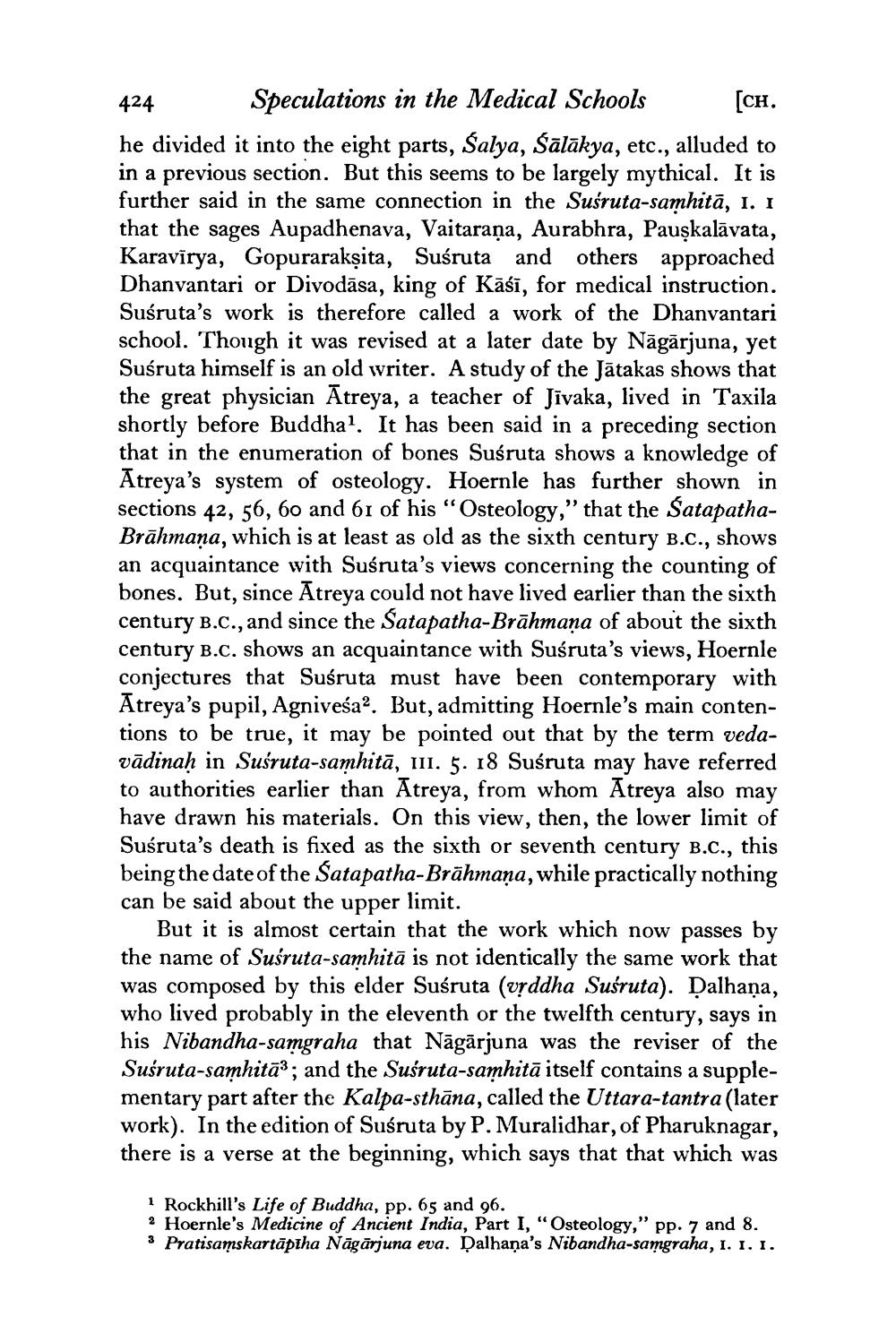________________
424 Speculations in the Medical Schools [CH. he divided it into the eight parts, Salya, Sālākya, etc., alluded to in a previous section. But this seems to be largely mythical. It is further said in the same connection in the Sušruta-samhitā, 1. I that the sages Aupadhenava, Vaitaraņa, Aurabhra, Pauşkalāvata, Karavīrya, Gopurarakṣita, Suśruta and others approached Dhanvantari or Divodāsa, king of Kāśī, for medical instruction. Suśruta's work is therefore called a work of the Dhanvantari school. Though it was revised at a later date by Nāgārjuna, yet Susruta himself is an old writer. A study of the Tātakas shows that the great physician Atreya, a teacher of Jivaka, lived in Taxila shortly before Buddhal. It has been said in a preceding section that in the enumeration of bones Suśruta shows a knowledge of Atreya's system of osteology. Hoernle has further shown in sections 42, 56, 60 and 61 of his “Osteology,” that the SatapathaBrāhmaṇa, which is at least as old as the sixth century B.C., shows an acquaintance with Suśruta's views concerning the counting of bones. But, since Atreya could not have lived earlier than the sixth century B.C., and since the Satapatha-Brāhmaṇa of about the sixth century B.C. shows an acquaintance with Suśruta's views, Hoernle conjectures that Susruta must have been contemporary with Atreya's pupil, Agniveśa. But, admitting Hoernle's main contentions to be true, it may be pointed out that by the term vedavādinaḥ in Suśruta-samhitā, iii. 5. 18 Suśruta may have referred to authorities earlier than Atreya, from whom Atreya also may have drawn his materials. On this view, then, the lower limit of Susruta's death is fixed as the sixth or seventh century B.C., this being the date of the Satapatha-Brāhmaṇa, while practically nothing can be said about the upper limit.
But it is almost certain that the work which now passes by the name of Suśruta-samhitā is not identically the same work that was composed by this elder Suśruta (vrddha Sušruta). Dalhana, who lived probably in the eleventh or the twelfth century, says in his Nibandha-samgraha that Nāgārjuna was the reviser of the Suśruta-samhitā}; and the Suśruta-samhitā itself contains a supplementary part after the Kalpa-sthāna, called the Uttara-tantra (later work). In the edition of Suśruta by P. Muralidhar, of Pharuknagar, there is a verse at the beginning, which says that that which was
i Rockhill's Life of Buddha, pp. 65 and 96. 2 Hoernle's Medicine of Ancient India, Part I, “Osteology," pp. 7 and 8. 3 Pratisamskartāpiha Nāgārjuna eva. Dalhaņa's Nibandha-samgraha, 1. I. I.




